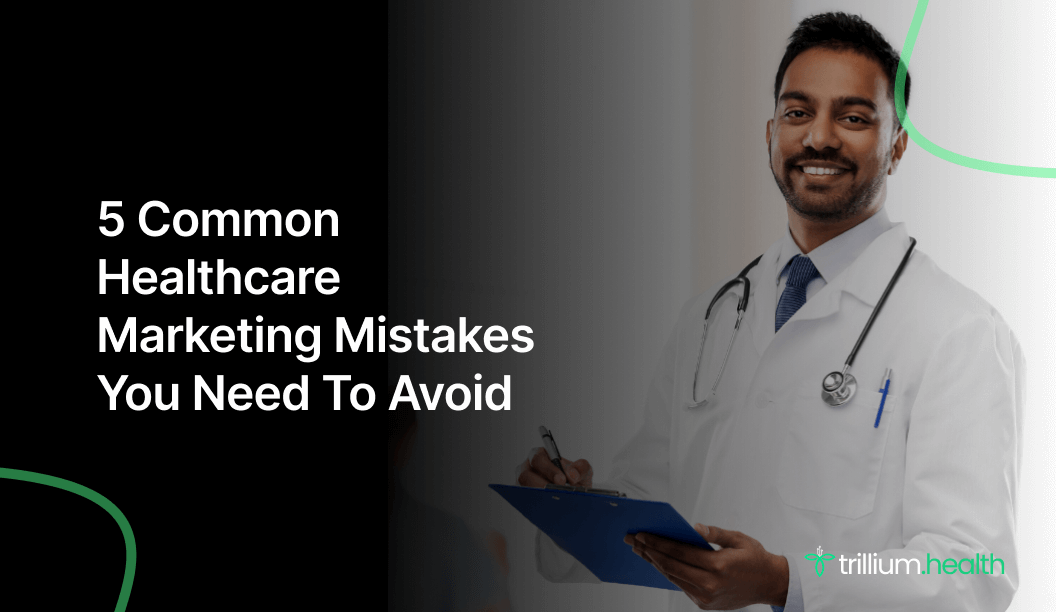In today’s competitive healthcare landscape, healthcare advertising has become essential for independent physicians to stay ahead of the game. Marketing is no longer a luxury but a necessity for healthcare providers to attract and retain patients.
With digital healthcare booming into a billion-dollar market, healthcare marketing is where you need to put your foot down. For independent physicians, marketing is crucial for attracting and retaining patients, building a solid reputation, and increasing revenue.
Even with the best intentions, physicians can unknowingly make mistakes that can hinder their marketing efforts. These mistakes can negatively impact their reputation, brand, and revenue. In this blog, we will list some of the common mistakes physicians often make so that you can keep an eye out for and avoid them.
This Blog Includes:
What is the importance of healthcare advertising?
Independent physicians often face significant challenges when competing against larger healthcare organizations and hospital systems. Therefore, executing healthcare marketing is essential for independent physicians to stay competitive and attract new patients.
Marketing can improve patient engagement and satisfaction by providing valuable information and resources that help patients make informed decisions about their healthcare. Studies have shown us that over 90% of patients look for healthcare information online, and 9 out of 10 patients are confident that the online information is reliable and trustworthy.
Common mistakes in healthcare advertising
Here are some common mistakes physicians make when new to healthcare advertising.
1. Undefined target audience
A specific target audience can help practices navigate strategies and maximize time and effort. Not identifying your target audience means wasting valuable resources by focusing on the wrong people.
If you’re not targeting your ideal patient demographic, your healthcare advertising efforts may not reach the people most likely to benefit from your services. It can result in a low return on investment (ROI).
To define your target audience, you must know more than patient geography. Look into your services and list who will be interested in them and what more you want to do. Set the basic demographics of gender, age, and income. With your information, you can set up the marketing mode of communication to send out your message.
2. You haven’t optimized your website
The main goal of marketing your practice is to attract potential patients, educate your audience, and retain your existing patients. However, without an optimized website, you will not be able to achieve your goals in marketing.
If your website is not optimized, that is, unappealing design, poor layout and experience, outdated content, disparity across portals, and ignoring mobile experience, Google and other search engines are highly unlikely to bring up your website in the top SERPs (Search Engine Result Pages).
To build an optimized website, you must establish a strong keyword foundation so your target audience can easily find your practice. You should also ensure the website loads quickly and is adaptable to any screen size.
57% of patients often leave a website if it does not load within 3 seconds, so you must optimize it to maintain at least the average loading speed in the healthcare industry, 5.4 seconds.
In addition, ensure your services and features are accurately represented, blog content updated, and all portals appropriately linked.
3. Overlooking online directories and online presence
Anyone can create profiles on sites like Google, Healthgrades, and RateMDs. You are responsible for taking over your page or creating one with the correct information.
Why do you think it is necessary to claim your online directories? Over 82% of patients use search engines, mainly Google, to search for healthcare providers. With updated and accurate profiles, you can increase your visibility online, establish your brand identity, and improve your online reputation.
In addition, collecting patient reviews is a course path to improving online reputation and creating a solid online presence. 90% of patients read and evaluate a provider based on online reviews. Actively requesting patient feedback and responding to them can accelerate your patient engagement.
4. Ignoring patient education
Patients increasingly seek information about their health and treatment options online in today’s digital age. By not providing this information, healthcare providers risk losing patients to competitors who are more proactive in their content marketing efforts.
Additionally, patients need to be educated about their health to be more likely to make better healthcare decisions or delay seeking treatment, leading to worsened health outcomes and decreased patient satisfaction.
By failing to educate patients with content, healthcare providers may miss opportunities to establish themselves as experts in their field and build trust and credibility with patients. Creating blogs, articles, videos, and infographics in simple form without jargon can improve patient engagement and credibility and build confidence.
5. Marketing in the wrong media
You send your message to reach the right audience. However, you must choose the appropriate medium to lay out your marketing strategies to get to the right audience.
Choose the right healthcare marketing channel to send your practice’s message. It can be social media, pay-per-click advertising (PPC), search engine optimization (SEO), email marketing, or content marketing. It all depends on your target audience and where they spend their time online.
Avoid these mistakes when you market your practice
We know how vital healthcare advertising is and how efficiently marketing strategies can boost patient engagement and experience. Utilizing patient engagement tools can help you greatly to accelerate digital health and achieve financial freedom.
Independent physicians investing in healthcare marketing can build their reputation, increase patient engagement, and attract new patients. However, avoiding common marketing mistakes that can negatively impact practice is essential.



